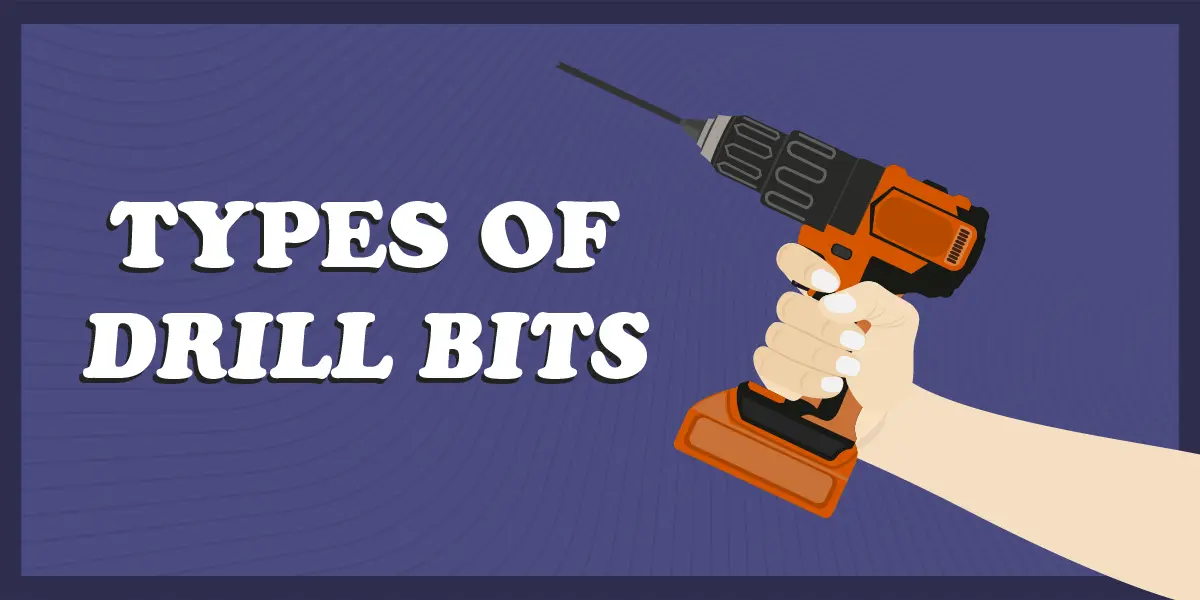The Bertha Tunnel Boring Machine dug the SR 99 tunnel in Seattle and measured a massive 57.5 feet in diameter and 326 feet long. Its custom cutter head cost over $80 million.
Though less impressive, the drill bits we’ll discuss in this blog do essentially the same thing: boring through stuff. And, unlike Bertha, they should be within your budget and an indispensable part of your tool kit. Few woodworking projects, DIY repairs, and construction jobs are accomplished without drilling a hole or two.
Why Choosing the Right Drill Bit Matters
Using the wrong drill bit leads to poor-quality work, broken tools, or safety hazards. Each drill bit is designed for a specific purpose.
- Wood bits create clean, smooth holes in wood without splintering.
- Masonry bits drill through tough materials like concrete and brick.
- Metal bits are highly durable and extra hard to bore into various metals without dulling quickly.
Understanding these drill bit types ensures your work is efficient, safe, and professional-looking.
Types of Drill Bits & Their Uses
1. Twist Drill Bits
This common type suits various materials, including wood, plastic, and metal.
Best Uses
- General-purpose drilling
- Small-diameter holes
- Everyday household tasks like assembling furniture or installing hardware
Pro Tip
Use a high-speed steel (HSS) twist bit for drilling metal or harder materials. It resists heat buildup and wear better than standard steel bits.
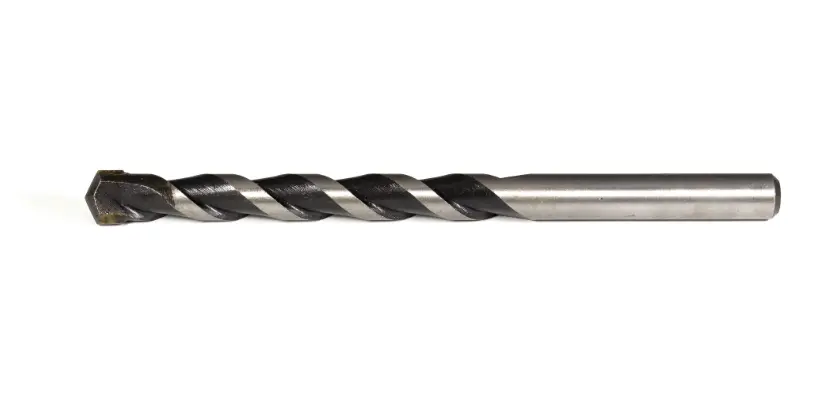
A twist drill bit suits various materials, including wood, plastic, and metal.
2. Brad Point Drill Bits (For Woodworking)
Brad point bits have a sharp, pointed tip that ensures accurate hole placement. If you need a straight and clean hole, always opt for a brad point bit — it gives you pinpoint accuracy compared to other types.
Best Uses
- Clean, splinter-free holes in wood
- Furniture-making and cabinetry projects
- Creating accurate dowel holes
Pro Tip
Choose a brad point bit with a reduced shank for better control and less deflection when drilling deep holes.
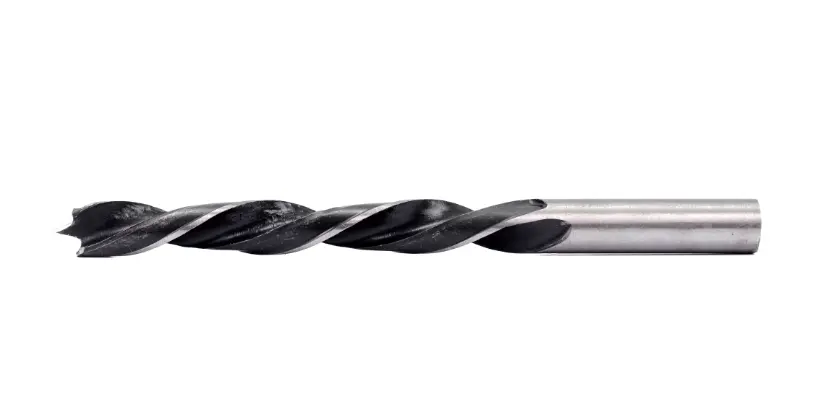
Brad point drill bits have a sharp, pointed tip that ensures accurate hole placement.
3. Spade Bits (For Large, Quick Holes)
Spade bits, or paddle bits, are wide and flat for drilling large holes in wood. They work fast but leave rough edges.
Best Uses
- Drilling large-diameter holes in wood
- Running wires or pipes through studs
- Quick woodworking projects
Pro Tip
Use a hole saw attachment for your drill to achieve even larger diameters.
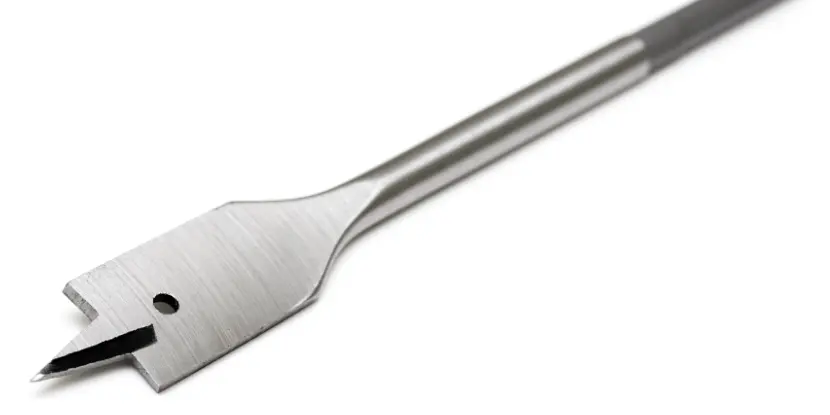
Spade bits are wide and flat for drilling large holes in wood.
4. Masonry Drill Bits
These heavy-duty bits have a carbide tip that can easily penetrate tough materials like brick, concrete, and stone.
Best Uses
- Drilling into concrete, brick, stone, or cinder blocks
- Installing anchors or wall fixtures
- Outdoor construction projects
Pro Tip
Use a hammer drill for even better results. It combines rotary motion with percussive force to power through hard materials.
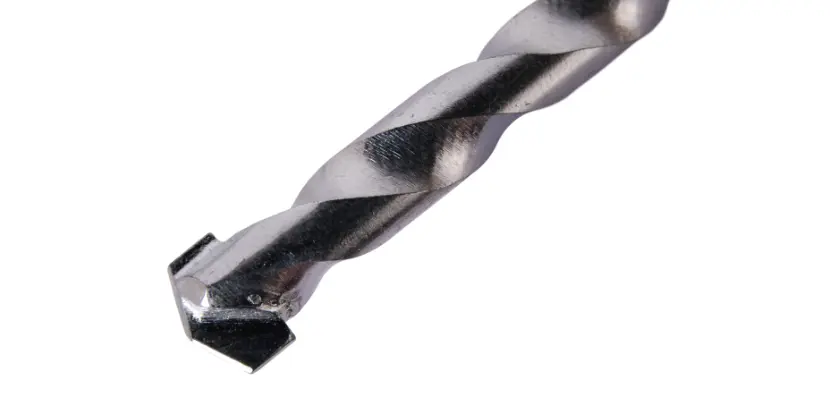
Masonry drill bits have a carbide tip that can easily penetrate tough materials like brick, concrete, and stone.
5. Forstner Bits (For Fine Woodworking)
Forstner bits leave clean edges and create flat-bottomed holes, making them popular among woodworkers.
Best Uses
- Drilling flat-bottom or pocket holes in wood
- Fine woodworking, cabinetry, or furniture-making
- Drilling overlapping holes
Pro Tip
Use a drill press with Forstner bits for maximum accuracy and stability.
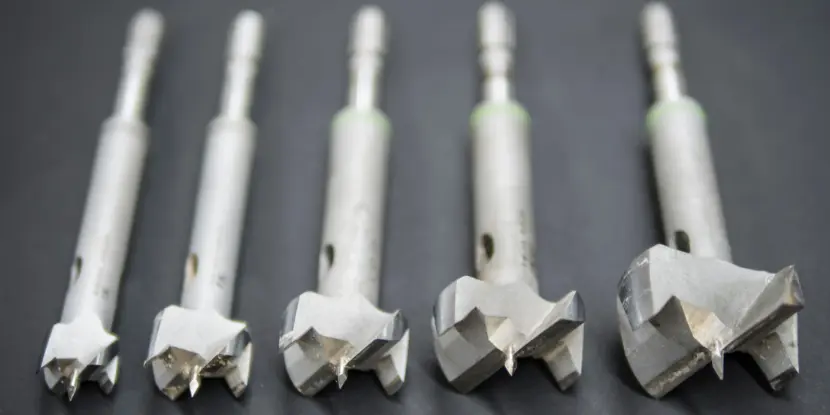
Forstner bits leave clean edges and create flat-bottomed holes.
6. Hole Saw Bits (For Large Circular Holes)
Hole saw bits are circular tools that cut clean, large-diameter holes in one pass.
Best Uses
- Installing doorknobs or light fixtures
- Creating larger openings in wood, metal, or drywall
- Cutting out decorative shapes
Pro Tip
Choose materials carefully — hole saw bits come in different types, including bi-metal (for steel) and carbide-tipped (for harder surfaces).
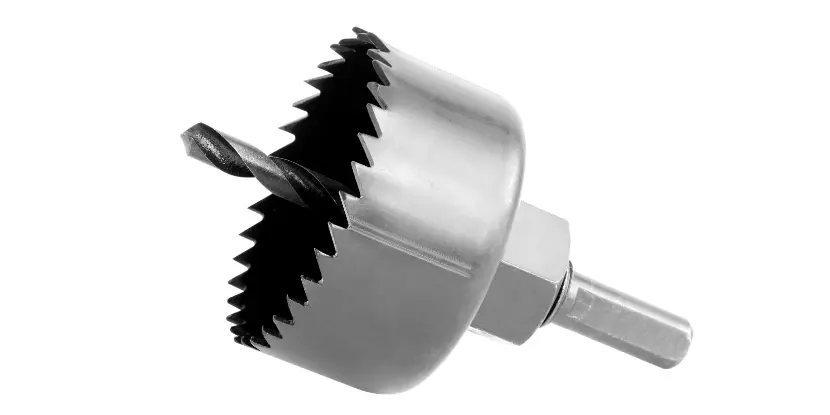
Hole saw bits cut clean, large-diameter holes in one pass.
7. Countersink Bits (For Flush Screws)
Countersink bits drill a conical hole, allowing screws to sit flush or slightly below a surface.
Best Uses
- Installing countersunk screws
- Creating smooth surface finishes in wood or metal
- Preventing wood from cracking or splitting
Pro Tip
Pair a countersink bit with a pilot hole for perfect screw placement every time.
8. Step Drill Bits (For Thin Materials)
Step drill bits, which look like Christmas trees, drill progressively larger holes. They’re excellent for thin materials like sheet metal or plastic.
Best Uses
- Drilling thin metal or plastic
- Creating holes of varied sizes without changing bits
- Lightweight construction projects
Pro Tip
Use slow speeds and light pressure when drilling thin materials to prevent overheating or damage.
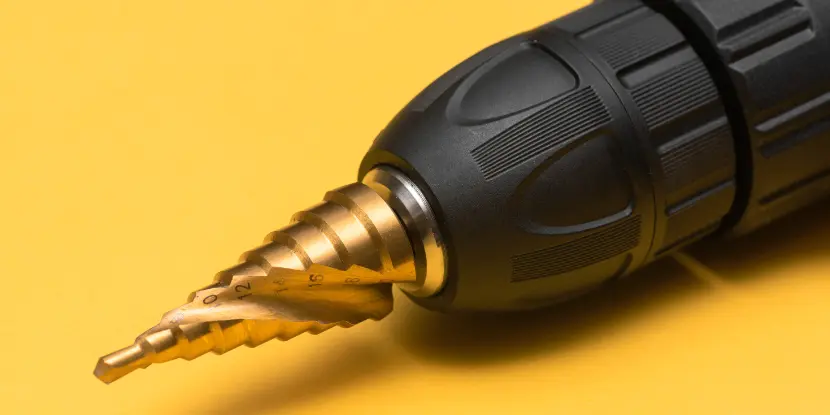
Step drill bits drill progressively larger holes.
9. Auger Bits (For Deep, Precise Holes)
Auger bits are long, spiral-shaped bits designed to drill deep holes in wood and remove material efficiently.
Best Uses
- Drilling deep holes into thick wood
- Construction or large woodworking projects
- Structural woodworking or large builds
- Fence post installations
Pro Tip
Pair an auger bit with a low-speed drill for maximum control and clean results.
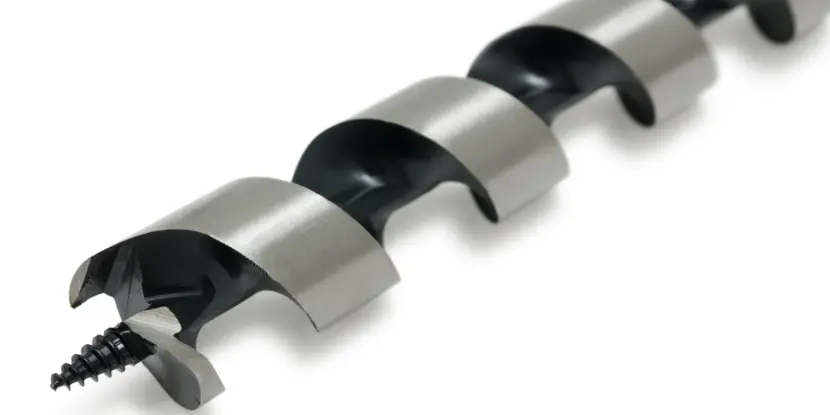
Auger bits are long and spiral-shaped to drill deep holes in wood.
10. Glass & Tile Drill Bits (For Delicate Surfaces)
Glass and tile drill bits have spear-shaped tips for drilling smooth holes in delicate surfaces without cracking or breaking.
Best Uses
- Drilling into glass, ceramic, or porcelain tiles
- Bathroom and kitchen renovations
- Decorative installations
Pro Tip
Always start at a slow speed and apply light pressure. Use masking tape to reduce slippage when drilling into tiles.
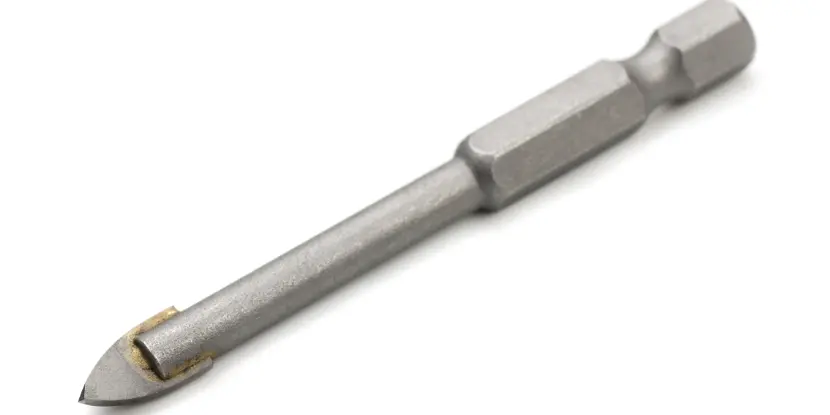
Glass and tile drill bits have spear-shaped tips for drilling smooth holes in delicate surfaces.
11. Hammer Drill Bits (For Concrete & Masonry)
These bits have a specially designed shank that lets them withstand the percussive motion of a hammer drill. With their carbide tips, they can make quick work of concrete or masonry.
Best Uses
- Drilling into concrete, brick, stone, or cinder blocks
- Installing anchors or wall fixtures
- Construction projects requiring heavy-duty drilling
Pro Tip
Use water as a coolant when drilling for longer durations to prevent overheating and extend the life of your bit.
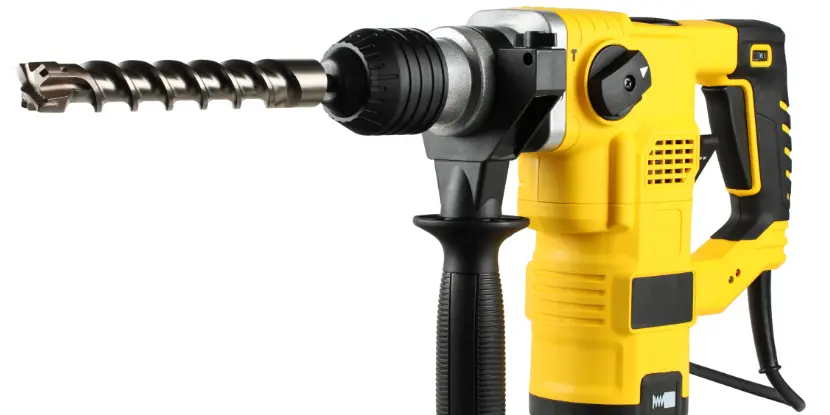
Hammer bits have a specially designed shank that lets them withstand the percussive motion of a hammer drill.
12. SDS Drill Bits (For Heavy-Duty Masonry)
SDS drill bits are similar to hammer drill bits but with a more robust shank. They’re made for heavy-duty masonry and concrete drilling and are commonly used in construction and demolition projects.
Best Uses
- Drilling into reinforced concrete or other tough materials
- Demolition projects involving heavy-duty drilling
- Construction projects requiring precise and powerful drilling
Pro Tip
Choose the right size SDS bit for your tool. There are three different sizes: SDS-plus, SDS-max, and Spline drive.
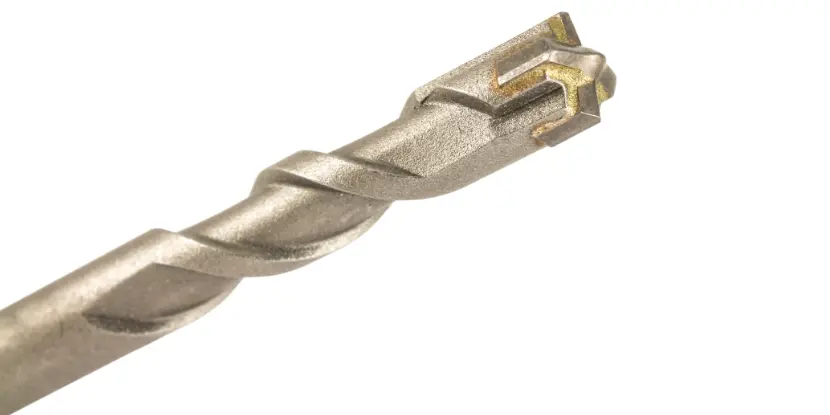
SDS drill bits are similar to hammer drill bits but with a more robust shank.
FAQs: Types of Drill Bits
Q: How do I know which drill bit to choose?
Start by identifying the material you’re working with — wood, metal, concrete, or tile — and choose a bit designed for that material.
Q: Do drill bits need regular maintenance?
Yes! Keep your drill bits clean and sharp. Use a sharpening tool or take them to a professional sharpener when necessary.
Q: Are all drill bits compatible with any drill?
Most standard drill bits fit into universal drills. However, some specialized bits (like hammer drill or SDS) require specific tools.
Q: What’s the difference between coated and uncoated bits?
Coated drill bits (e.g., titanium or cobalt) are more durable and heat-resistant. They’re ideal for heavy-duty tasks or frequent use.
Q: Can I use wood drill bits on metal or concrete?
Wood drill bits may dull or break when used on harder materials like metal or concrete. Always use drill bits designed for the material you’re working with.
Q: What’s the purpose of pilot holes?
Pilot holes are small, pre-drilled holes that guide screws or larger drill bits. They help prevent wood from splitting, ensure screws go in straight, and make the drilling or screwing process easier.
Q: How do I prevent tiles from cracking while drilling?
Use a glass or tile drill bit and start at a low speed with light pressure. Masking tape over the drill site can prevent slippage and provide extra stability.
Q: Are expensive drill bits worth the investment?
Although high-quality drill bits may cost more, they usually last longer and perform better, especially for frequent or heavy-duty use.

